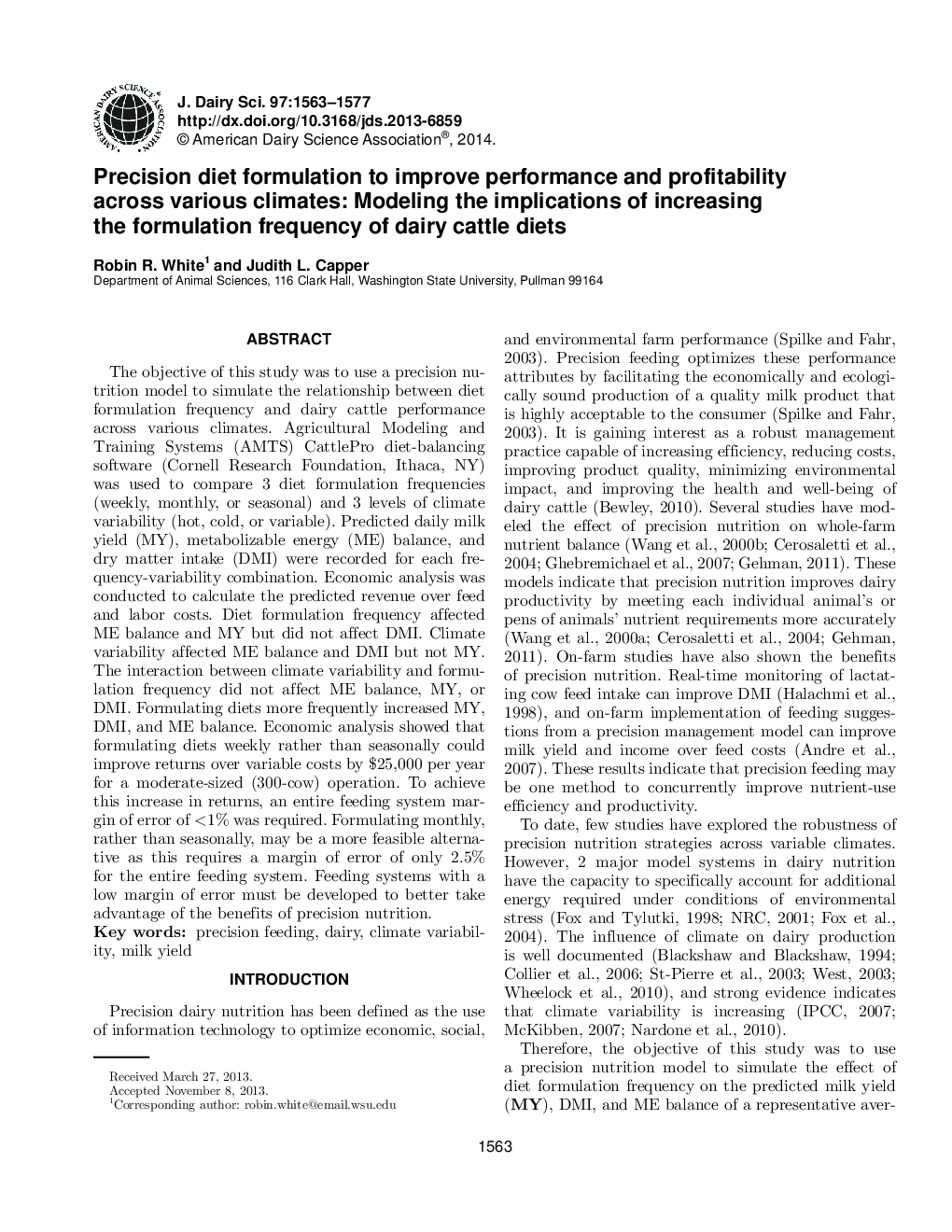| کد مقاله | کد نشریه | سال انتشار | مقاله انگلیسی | نسخه تمام متن |
|---|---|---|---|---|
| 10975157 | 1108031 | 2014 | 15 صفحه PDF | دانلود رایگان |
عنوان انگلیسی مقاله ISI
Precision diet formulation to improve performance and profitability across various climates: Modeling the implications of increasing the formulation frequency of dairy cattle diets
ترجمه فارسی عنوان
فرمول بندی دقیق رژیم غذایی برای بهبود عملکرد و سودآوری در اقلیم مختلف: مدل سازی پیامدهای افزایش فرایند فرمول بندی رژیم های گاو شیری
دانلود مقاله + سفارش ترجمه
دانلود مقاله ISI انگلیسی
رایگان برای ایرانیان
کلمات کلیدی
تغذیه دقیق، لبنیات، تغییر آب و هوا، عملکرد شیر،
موضوعات مرتبط
علوم زیستی و بیوفناوری
علوم کشاورزی و بیولوژیک
علوم دامی و جانورشناسی
چکیده انگلیسی
The objective of this study was to use a precision nutrition model to simulate the relationship between diet formulation frequency and dairy cattle performance across various climates. Agricultural Modeling and Training Systems (AMTS) CattlePro diet-balancing software (Cornell Research Foundation, Ithaca, NY) was used to compare 3 diet formulation frequencies (weekly, monthly, or seasonal) and 3 levels of climate variability (hot, cold, or variable). Predicted daily milk yield (MY), metabolizable energy (ME) balance, and dry matter intake (DMI) were recorded for each frequency-variability combination. Economic analysis was conducted to calculate the predicted revenue over feed and labor costs. Diet formulation frequency affected ME balance and MY but did not affect DMI. Climate variability affected ME balance and DMI but not MY. The interaction between climate variability and formulation frequency did not affect ME balance, MY, or DMI. Formulating diets more frequently increased MY, DMI, and ME balance. Economic analysis showed that formulating diets weekly rather than seasonally could improve returns over variable costs by $25,000 per year for a moderate-sized (300-cow) operation. To achieve this increase in returns, an entire feeding system margin of error of <1% was required. Formulating monthly, rather than seasonally, may be a more feasible alternative as this requires a margin of error of only 2.5% for the entire feeding system. Feeding systems with a low margin of error must be developed to better take advantage of the benefits of precision nutrition.
ناشر
Database: Elsevier - ScienceDirect (ساینس دایرکت)
Journal: Journal of Dairy Science - Volume 97, Issue 3, March 2014, Pages 1563-1577
Journal: Journal of Dairy Science - Volume 97, Issue 3, March 2014, Pages 1563-1577
نویسندگان
Robin R. White, Judith L. Capper,
